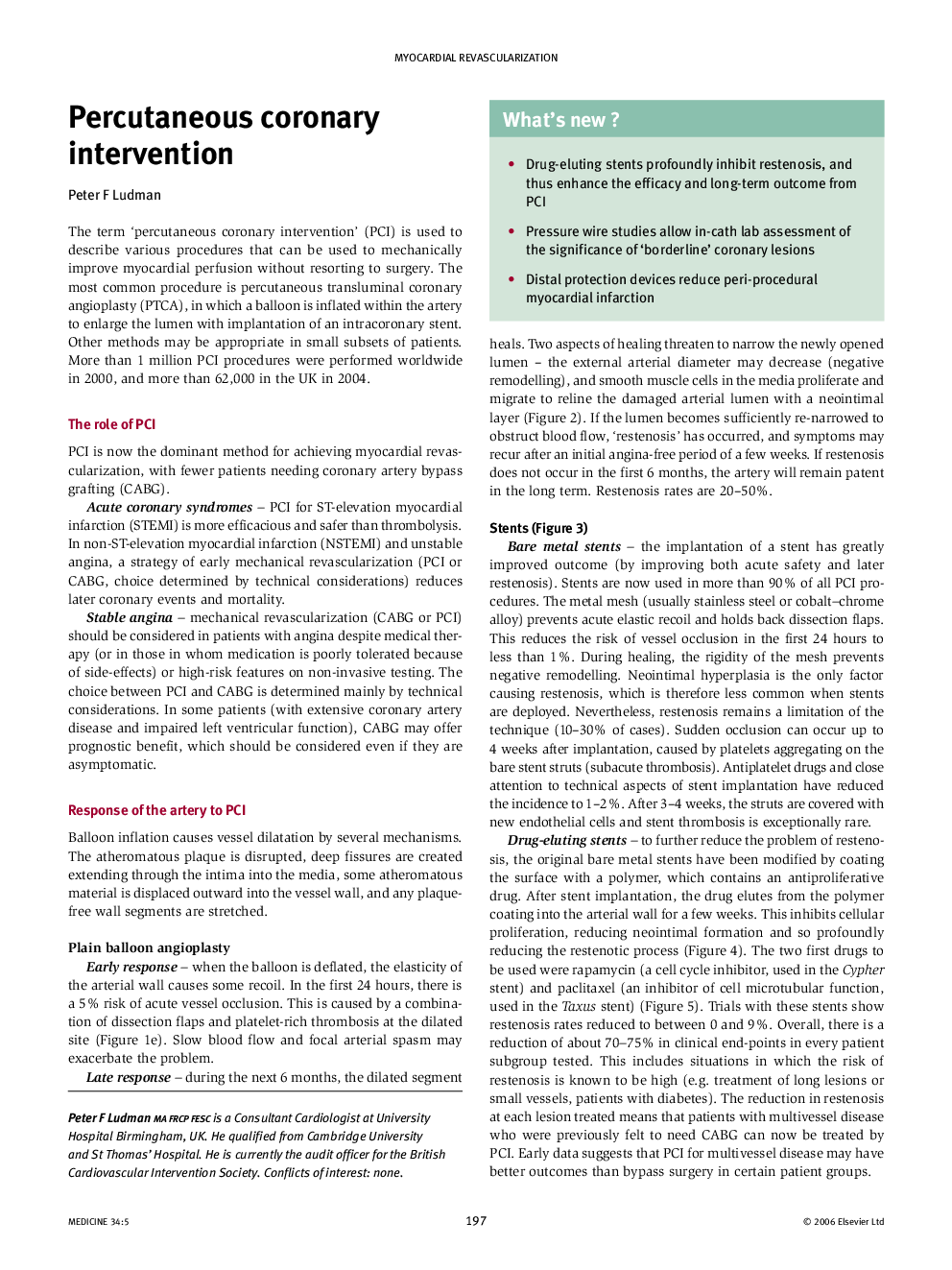| کد مقاله | کد نشریه | سال انتشار | مقاله انگلیسی | نسخه تمام متن |
|---|---|---|---|---|
| 3804671 | 1245088 | 2006 | 6 صفحه PDF | دانلود رایگان |

Percutaneous Coronary Intervention (PCI) is now the dominant method for mechanically improving myocardial perfusion in the treatment of coronary artery disease. The procedure is performed via a 2 mm diameter intra-arterial sheath. A balloon is used to dilate the coronary stenosis, and a stent implanted to scaffold the vessel. Renarrowing of the treated site may occur due to neointimal proliferation, but stents with drug eluting coatings have profoundly reduced this problem. Most of the acute complications of PCI are mediated by platelet activation, and patients are therefore treated with a combination of clopidogrel and aspirin in addition to heparin and in some cases a glycoprotein IIb/IIIa receptor antagonist. Early post procedure complications include haemorrhage from the arterial access site, abrupt vessel closure and cardiac tamponade. The requirement for emergency CABG is now about 0.2%, and in hospital mortality about 0.6%.
Journal: Medicine - Volume 34, Issue 5, 1 May 2006, Pages 197-202